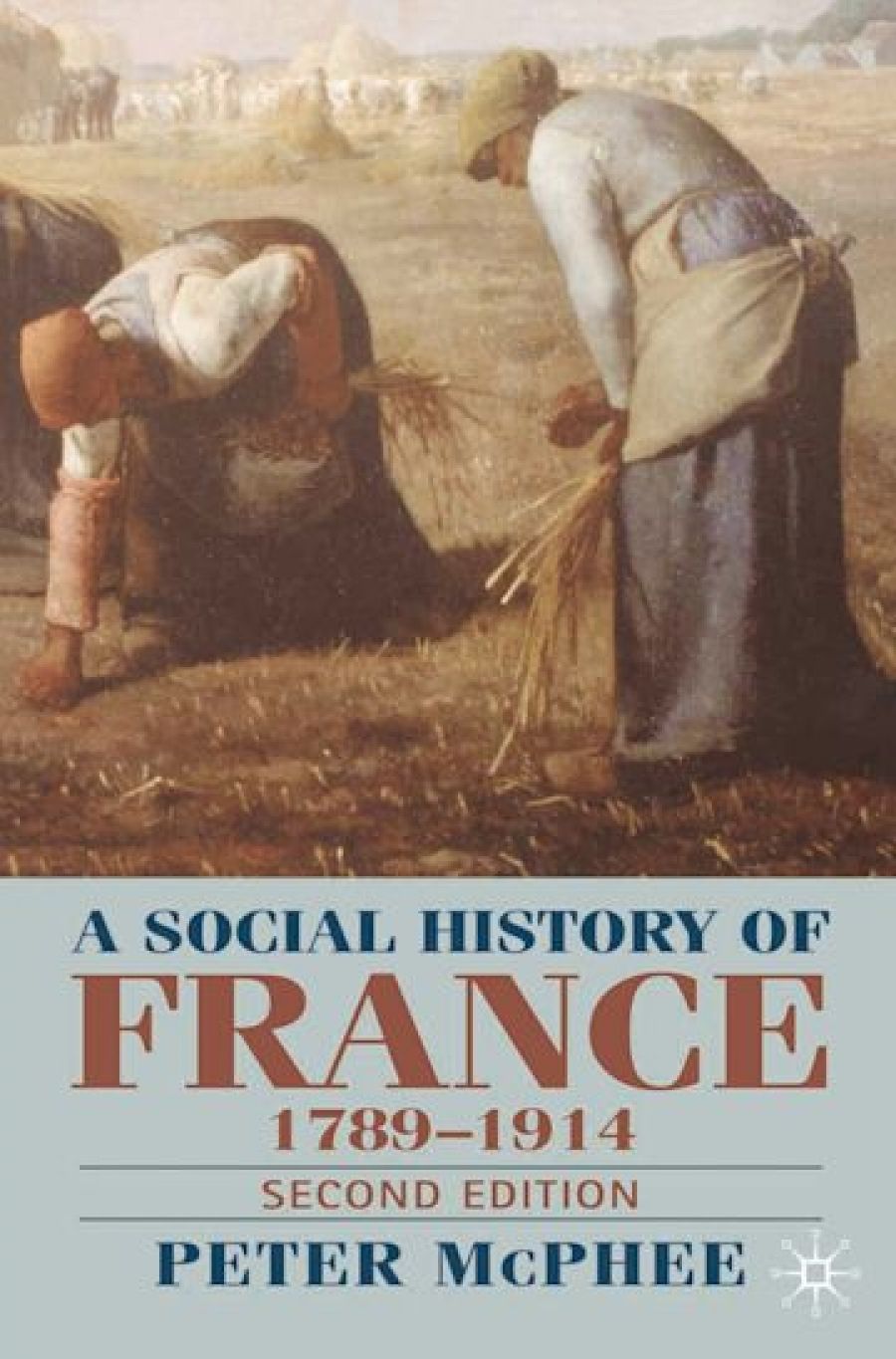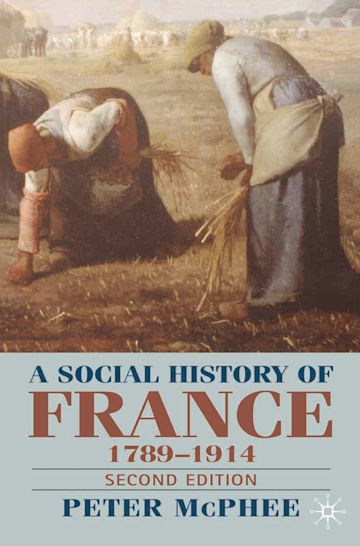
- Free Article: No
- Contents Category: History
- Custom Article Title: Changing France
- Review Article: Yes
- Article Title: Changing France
- Online Only: No
- Custom Highlight Text:
France in 1914 was in many ways almost completely different from how it was in 1789. In the 1780s France was an ‘agrarian pre-capitalist society’ in which the ‘location of most industry and the sources of power and most wealth were rural’. By the turn of the twentieth century, it was a capitalist society in which ‘an urban, bourgeois and republican culture had become as hegemonic as had been that of the Church and the aristocracy under the ancien régime’. The second edition of Melbourne academic Peter McPhee’s remarkable book, A Social History of France 1789–1914, explains why and how this occurred.
- Book 1 Title: A Social History of France 1789-1914
- Book 1 Subtitle: Second Edition
- Book 1 Biblio: Palgrave, $56 pb, 359 pp
- Book 1 Cover Small (400 x 600):

- Book 1 Cover (800 x 1200):

McPhee draws on all kinds of evidence – reading habits and the exchange of ideas, the changing nature of work, the symbols of authority, art, song, devotional practices, variations in rural culture and rural economies – to characterise what was distinctive about the new social landscape. The great strength of A Social History of France is McPhee’s broad understanding of this landscape. We learn, through the meticulous reconstruction of their associational, communal, working and family lives, which there were a number of ways people – through the habits, routines and responsibilities of daily life – articulated, negotiated or withstood new and ultimately transforming ideas about the state, deference, and individual and collective rights.
Licentious writings in the revolutionary period, for instance, evoked the imagined exploits of the royal family, the nobility, nuns and clerics, and spoke less of the sexual mores of the times than of the loss of prestige, respect and authority suffered by the old régime’s loci of power. It becomes clear that to understand the extent of the penetration of ‘subversive’ ideas we need to go beyond observing the breadth of the readership of the literature of the Enlightenment.
There is no one paradigmatic ‘model’ of modernisation that explains the process McPhee describes, and the story is never straightforward. Workers, active and conscious of gross inequalities and of their ‘right to work’, do not approximate Marx’s urban proletariat or a distinctive class until late in the nineteenth century, and even then variations in the patterns of working culture are still apparent. Women, while formally outside the body politic (and denied the vote until 1944), are deeply enmeshed in the social fabric. Some expressed a feminist voice in the midst of revolutionary movements. Louise Michel was among them. Teacher, feminist, radical activist of the 1860s and communard, Michel (along with about 4000 other communards) was exiled to New Caledonia where she compiled ‘one of the first collections of Kanak legends’. She witnessed and supported the Kanak rising of 1878. As in Paris in 1871, according to Michel, the ‘burning issue’ in New Caledonia was ‘liberty and dignity’.
Other women availed themselves of the multiple opportunities afforded for intimacy and fulfilment through the works of their local parish or by their religious vocation. There was an extraordinary increase in the number of women entering religious orders or congregations (from 15,000 in 1815 to 66,000 in 1850), and the numbers continued to rise throughout the nineteenth century. The increase was especially pronounced in the religious communities that performed vital social functions, including teaching and caring for the sick and the poor.
One of McPhee’s particular interests is in the rural world. The rural population does not comprise a neatly identifiable peasant class but inhabitants of villages and towns whose social composition and political orientation vary according to the local environment, its history, its economic base and, as the century proceeds, its proximity to new markets, transport routes and administrative centres. We learn that the artist Jean-François Millet’s gentle rendering of rural life was both true (in the sense that this rural culture had reached its ‘peak’) and idealised (in the sense that it had changed in such significant ways as to anticipate a certain nostalgia and a sense of loss).
McPhee’s journey includes many way stations, moments where we pause and take note of the relationship between periphery and centre. The gradual (and often partial) francisation; the local spheres of sociability and the rich associational life based on interests ranging from agricultural improvement societies to agitation for prison reform; the democratisation of political life whereby in the early twentieth century almost one-third of cabinet ministers had fathers who were either working class or petit bourgeois, compared with one-seventh thirty years earlier: these are just some of the factors that played a part in the emergence of a stronger sense of ownership of, and an identification with, the governing processes of the democratic republic.
A Social History of France is well written. Densely argued paragraphs are offset by marvellous evocations – be it of a moment in the life of an individual or a family, a landscape, or an industry. Both editions of this book have been universally praised; it reminds us of the freshness and diversity of French history, and its centrality to our understanding of the modern world.


Comments powered by CComment